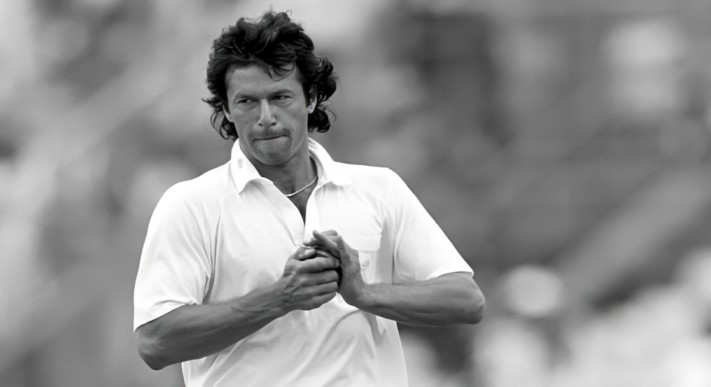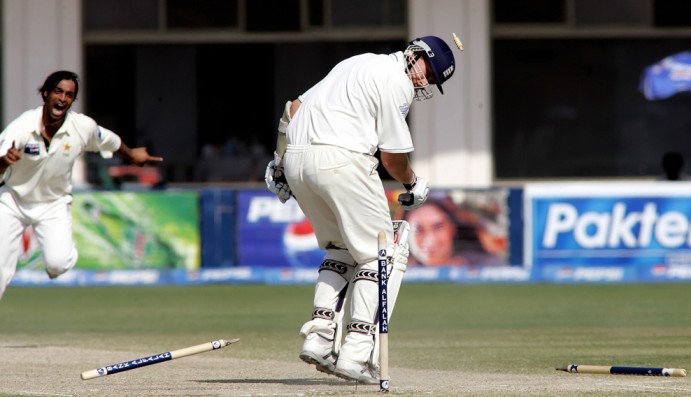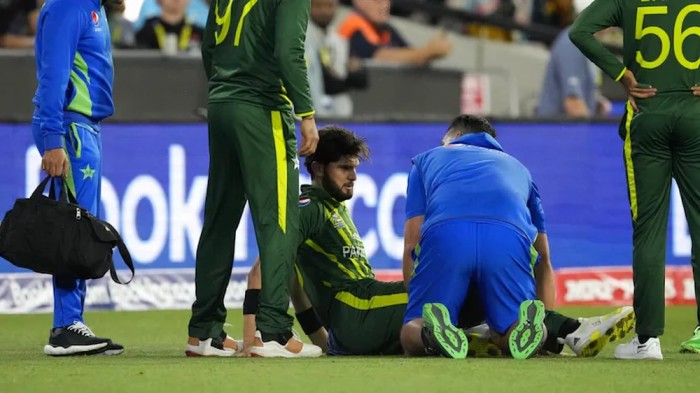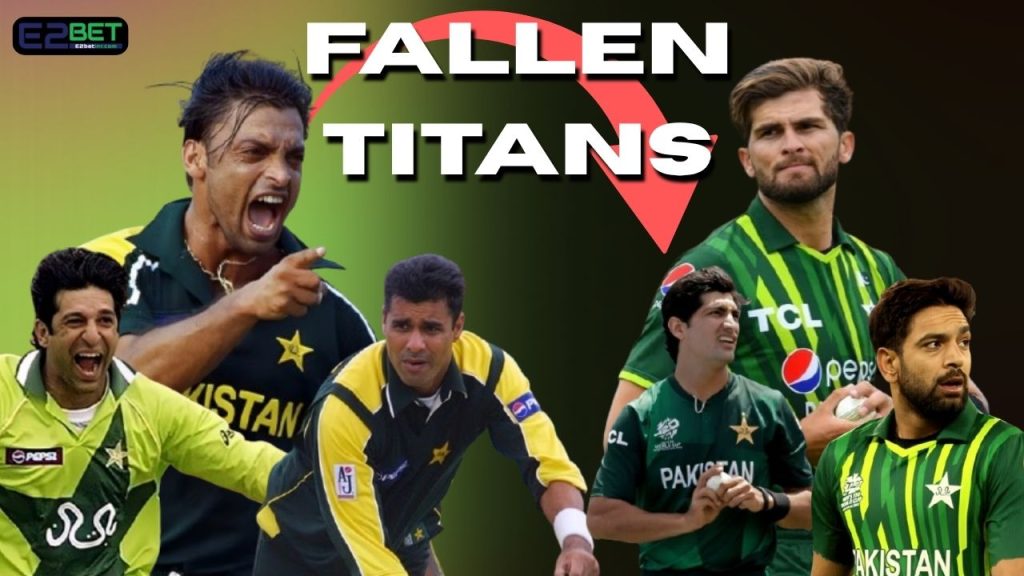For decades, Pakistan Fast Bowling was cricket’s most feared weapon raw pace, deadly swing, and heart-stopping aggression. But today, a storm once known for its fury is eerily silent. What happened to Pakistan Fast Bowling? In this suspense-packed story, we unfold the dramatic rise, stunning dominance, and mysterious downfall of one of cricket’s most iconic weapons.
The Roar Begins: The Birth of a Bowling Dynasty

In the bustling streets of Lahore and Karachi, barefoot boys hurled tennis balls at breakneck speed, dreaming of stardom. From this chaos, a new era was born in the 1970s. Imran Khan became the nation’s first genuine pace spearhead charming yet lethal, disciplined yet aggressive.
Imran wasn’t just a bowler; he was a movement. Behind him emerged a storm: Wasim Akram with the art of left-arm swing sorcery, Waqar Younis with yorkers that crushed toes, and Shoaib Akhtar who didn’t bowl he fired missiles.
This wasn’t just a bowling attack it was a revolution.
The Men Who Made Batsmen Tremble

The ‘90s and early 2000s were the era of nightmares for batsmen, that is.
Wasim Akram’s ball would whisper past the bat, Waqar’s thunderbolt yorkers sent stumps flying, and Shoaib Akhtar, the “Rawalpindi Express,” clocked speeds that flirted with 100 mph. Pakistan Fast Bowling wasn’t just feared it was respected, admired, and envied.
They didn’t just take wickets they owned sessions, decided matches, and carried the team on their shoulders. Any total was defendable if Pakistan’s fast bowlers had the ball.
What Made Them Different? The Secret Ingredients
What brewed this unmatched arsenal?
- Raw, Untamed Talent: Born from concrete streets and rugged fields, Pakistani pacers were forged in unforgiving conditions.
- Swing Mastery: Wasim and Waqar redefined swing both conventional and reverse.
- Smart Variations: Slower balls, reverse swing, bouncers they adapted like chameleons.
- Mentorship Legacy: Imran groomed Wasim. Wasim inspired Shoaib. The torch was passed with care.
Pakistan didn’t just make fast bowlers. They crafted artists who turned cricket balls into weapons.
The Echoes Fade: A Subtle Decline Begins
Then came the silence.
As T20 cricket boomed and flat pitches ruled the game, Pakistan’s once-roaring bowling attack became a whisper. By PSL 6, the decline was undeniable. The thunder was gone. Batsmen walked to the crease without fear.
Pakistan, the land that birthed thunderbolts, was now struggling to produce consistent, threatening fast bowlers.
What Went Wrong? The Unraveling Mystery

So, where did the storm go?
- Batsmen-Friendly Pitches: Modern cricket favors batters shorter boundaries, flatter pitches, and two new balls leave bowlers helpless.
- Poor Infrastructure: Unlike their golden era, modern pacers lack quality coaching and fitness systems. Raw talent is wasted without refinement.
- Injury Woes: Fast bowling is brutal. Pakistan’s bowlers break down too often, without proper recovery systems in place.
- Team Strategy Shift: More reliance on spin and batting meant fewer opportunities and poor management of pacers.
- Lost Aura: PSL showed senior bowlers bowling easy full tosses. The discipline, the fear, the rage it’s missing.
The fall wasn’t sudden. It was silent, systematic, and sad.
Sparks of Hope: The New Guardians of Pace
But all is not lost.
Shaheen Shah Afridi, tall and deadly, swings the ball like a seasoned warrior. Haris Rauf, with his fiery pace, has moments that remind fans of Shoaib Akhtar. Naseem Shah is a teenager with a lion’s heart and sharp seam.
These men carry the burden of history and the hope of revival for Pakistan Fast Bowling.
What Needs to Change to Reignite the Storm?
If Pakistan wants its fast bowling empire back, it must:
- Build Fast Bowling Academies: Modern training, rehab, and analytics for sustained performance.
- Restructure Domestic Cricket: Prepare fast-bowler friendly pitches and fierce competitions.
- Bring Back Mentors: Legends like Wasim and Waqar must guide the next generation.
- Embrace Sports Science: Track workloads, prevent injuries, and improve recovery.
- Reignite the Culture: Bring back the pride, aggression, and warrior mindset.
The Waiting Game: Will the Thunder Return?
The world still watches with bated breath.
The legend of Pakistan Fast Bowling is not buried. It sleeps, waiting for someone to awaken it. The ghosts of Imran, Wasim, Waqar, and Shoaib linger in the dressing rooms, whispering secrets to those who dare to listen.
Pakistan’s fast bowling empire can rise again but only if talent meets discipline, and passion meets planning.
The question remains: who will be the next thunderbolt?
And when the storm does return will the world be ready for it?
READ MORE:
- The Reign of King Kohli: Why Virat Kohli is the Undisputed King of Cricket
- Why Jasprit Bumrah Is the Most Complete Fast Bowler Ever: Ultimate Weapon
FAQ
Why was Pakistan’s fast bowling feared?
Because of legendary pacers with raw pace, deadly swing, and aggression.
What led to the decline?
Poor infrastructure, injuries, flat pitches, and lack of mentorship.
Who are the current pace stars?
Shaheen Afridi, Haris Rauf, and Naseem Shah.
What role did reverse swing play?
It made Pakistani pacers lethal on any pitch.
Can Pakistan bounce back?
Yes, with proper training, structure, and guidance.



